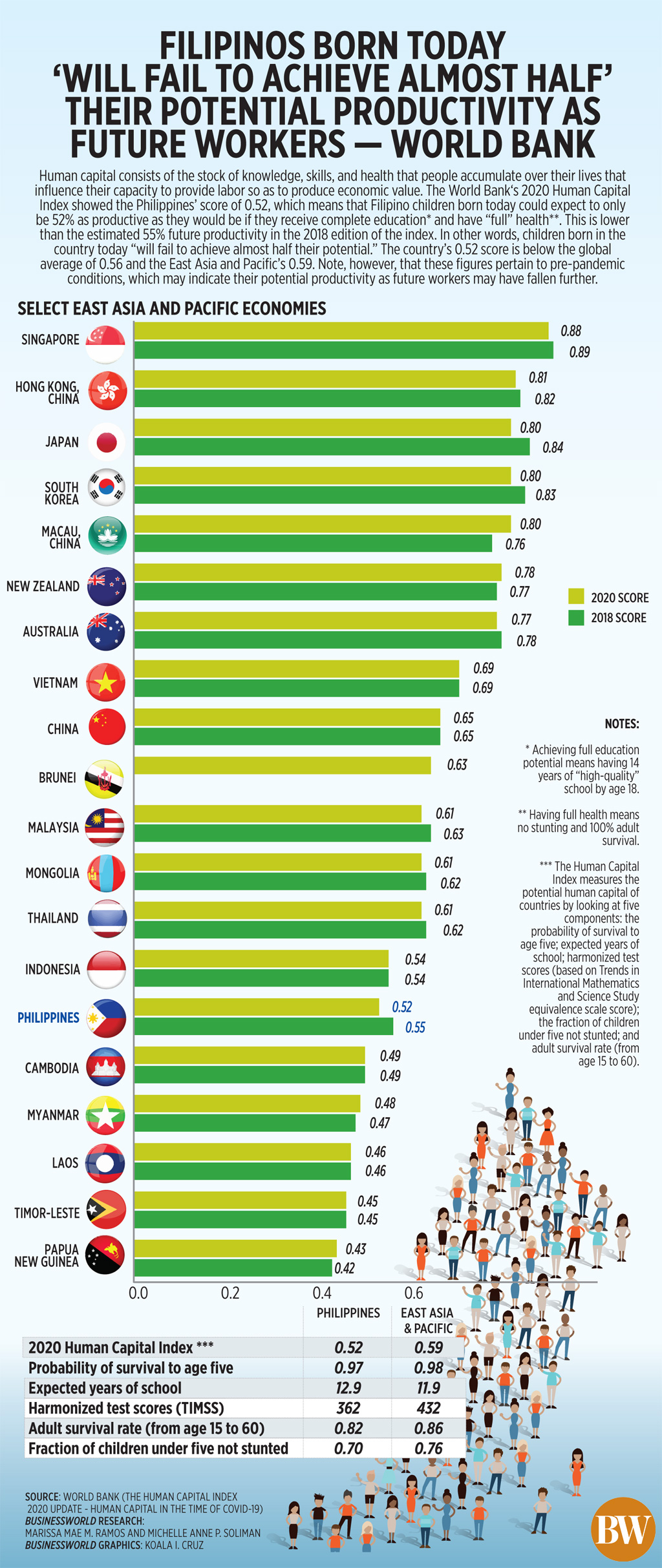
CHILDREN born in the Philippines today will “fail to achieve almost half their potential” productivity as future workers, according to a World Bank report.
The Washington-based multilateral lender’s Human Capital Index (HCI) 2020 Update report showed the Philippines’ HCI fell to 0.52 in 2020, from 0.55 in 2018, partially reversing the gains it had when it improved from 0.49 in 2012.
“The country’s HCI score of 0.52 means that children born in the country today will fail to achieve almost half their potential,” the report released Thursday read.
The index, which measures the human capital potential of children today, ranges from 0 to 1, with scores closer to 1 indicating better human capital status.
Despite the slight decline in its HCI, the World Bank noted the Philippines is among the countries with notable improvements over the last decade, along with Singapore, Morocco and Ghana.
Enrolment in the country significantly increased as seen in primary and secondary gross enrollment rates hitting 100% and nearing 90%, respectively in 2017.
However, quality of education still remains an issue despite the expanded access. The World Bank noted sores of 15-year-old students from the Philippines were lower compared with nearly all other participating countries in the 2018 Programme for International Student Assessment (PISA).
“In the Philippines, although several successive political administrations have adopted and sustained robust strategies to build the human capital of the population, they have not succeeded in growing sufficiently the capacity and good governance needed to implement these efforts on the ground,” the World Bank said.
The report noted the Philippines’ expenditures on health and education programs at 4.4% and 3.5% of gross domestic product (GDP), respectively, were relatively lower than what an average country at the same income level would spend: 6.5% of GDP for health programs and 4.5% on education.
“Widespread fraud in the distribution of textbooks, theft of funds or supplies, and ghost workers (workers who are paid but do not carry out their jobs) in municipal health facilities are all reflected in the country’s outcomes. In the PISA 2018 exam, about four-fifths of students (81%) achieved lower than a minimum level of proficiency in reading, while a similarly high percentage of students performed below the minimum level of proficiency in mathematics,” the World Bank said.
Among Asian countries, Singapore had the highest HCI score with 0.88, followed by Hong Kong (0.81), Japan (0.80), South Korea (0.80). and Macao (0.80).
The review process for the HCI data was conducted between February and July. The HCI was measured through five index components: enrollment data, child mortality, harmonized test scores, stunting rates, and adult mortality.
The latest edition updated the index to include expanded data for the components measured. It also added 17 new countries from its previous report in 2018, bringing the total to 174 countries.
The World Bank noted that many countries have made a huge progress in improving human capital over the last 10 years but the impact of the coronavirus pandemic threatens to reverse many of those gains. — Beatrice M. Laforga

